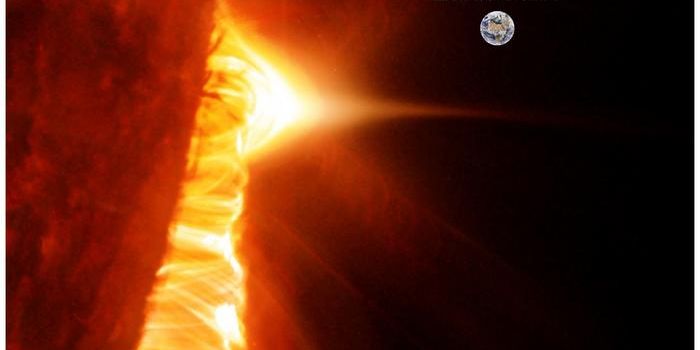The Stardust That Made Us & Our Planet
You may know that the human body is made up of elements that almost all originated in stars, and many of those elements have been through supernovas. New research reported in Science Advances has taken that finding further and examined how carbon helped form the planet.
The new study has demonstrated that most of the carbon found on Earth was probably sent here by material that exists in between the stars in a galaxy, the interstellar medium. That carbon was likely delivered after the disc of dust, gas, and planetary building blocks swirling around the sun, the protoplanetary disc, formed and began to heat up. Carbon may have been in solid materials within one million years of the Sun's birth.
It was previously suggested that the Earth's carbon was derived from molecules in nebular gas. As the gas cooled down, molecules could precipitate and planets could form. "The condensation model has been widely used for decades. It assumes that during the formation of the Sun, all of the planet's elements got vaporized, and as the disk cooled, some of these gases condensed and supplied chemical ingredients to solid bodies. But that doesn't work for carbon," explained Jie (Jackie) Li, a professor in the University of Michigan's (U-M) Department of Earth and Environmental Sciences.
Once carbon is vaporized, it produces volatile species and will not condense back into a solid organic form. Most carbon on earth seems to have been sent here in the form of organic molecules. Thus, Li's team hypothesized that the carbon on Earth came straight from the interstellar medium, and avoided vaporization.
The team asked how much carbon Earth could possibly hold. By examining the speed of seismic waves through the planet's core, and known sound velocities, they determined that less than half of a percent of the Earth's mass is carbon. Knowing the upper limit of carbon levels can tell the researchers more about when it arrived.
"We asked a different question: We asked how much carbon could you stuff in the Earth's core and still be consistent with all the constraints," said U-M astronomer Edwin Bergin, professor and chair of the U-M Department of Astronomy. "There's uncertainty here. Let's embrace the uncertainty to ask what are the true upper bounds for how much carbon is very deep in the Earth, and that will tell us the true landscape we're within."
The carbon level on a planet has to fit a Goldilocks standard - not too much, and not too little - to support life.
Another report in the Proceedings of the National Academy of Sciences examined how much carbon was processed by the precursors of planets as they formed. The metallic cores of these planets are now found as iron meteorites. When the researchers examined samples of them, they determined that while planets were forming, lots of carbon is lost while cores are created, and gas is lost.
"Most models have the carbon and other life-essential materials such as water and nitrogen going from the nebula into primitive rocky bodies, and these are then delivered to growing planets such as Earth or Mars," said Marc Hirschmann, a professor of earth and environmental sciences at the University of Minnesota. "But this skips a key step, in which the planetesimals lose much of their carbon before they accrete to the planets."
"The planet needs carbon to regulate its climate and allow life to exist, but it's a very delicate thing," Bergin said. "You don't want to have too little, but you don't want to have too much."
The loss of carbon seems to be crucial to turning the earth into a habitable place, noted Bergin.
"Answering whether or not Earth-like planets exist elsewhere can only be achieved by working at the intersection of disciplines like astronomy and geochemistry," said Fred Ciesla a professor of geophysical sciences at the University of Chicago. "While approaches and the specific questions that researchers work to answer differ across the fields, building a coherent story requires identifying topics of mutual interest and finding ways to bridge the intellectual gaps between them. Doing so is challenging, but the effort is both stimulating and rewarding."
Sources: Science Daily via University of Michigan, Science Advances, Proceedings of the National Academy of Sciences









